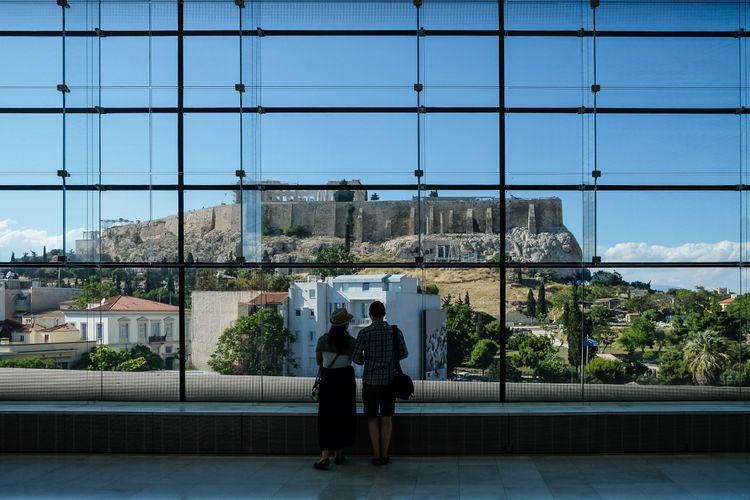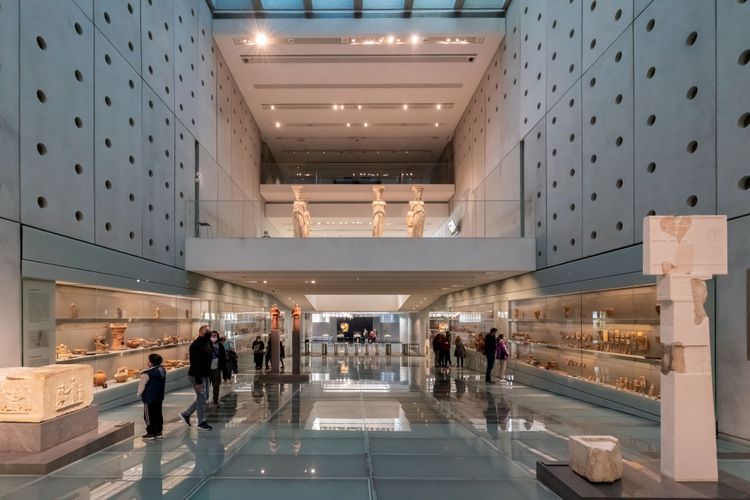After the Parthenon site managed to remain relatively untouched until the mid-to-late 17th century, it started incurring severe damage as a result a gunpowder explosion ignited by a lightning bolt in 1645 and the subsequent Turkish-Venetian war in 1686, also known as the Morean War (1684-1699). The site underwent warfare damage, pillaging and an overall lack of upkeep. In the 19th century, as the site gained popularity amongst visitors, it sadly underwent systematic looting as people took pieces of it as souvenirs. Most notably, a certain Thomas Bruce, 7th Earl of Elgin, and his team took many precious pieces of the site, including sculptures, frieze blocks from the Temple of Athena Nike, one of the Caryatids from the Erechtheion, and many other priceless antiquities which they shipped off to England. The pieces are on display in the British Museum but the Greek government has called for their return since 1890, as they are part of Greece’s unique cultural heritage. Discussions about the topic are ongoing between Greek and British officials. In 1834, the newly established Greek State designated the Acropolis as an official archaeological site, where searchers found many precious artefacts that needed a home, and thus the Acropolis Museum was born. A first iteration was opened in 1874 and underwent a radical expansion after the Second World War. The new Acropolis Museum was designed by architects Bernard Tschumi and Michael Photiades. It was built a mere 300 metres away from the Acropolis itself and opened to the public in 2009.
Ancient History enthusiasts around the world will agree when we say that the Acropolis Museums in Athens is one of the most exciting and interesting in the world. Tasked with protecting the Acropolis’ indispensable heritage, the Museum played a key role in preserving the legendary hill’s archaeological finds, thus allowing experts and visitors to piece together its fascinating history. Situated right across the Acropolis hill, the museum is an essential part of any trip to Athens, serving as a true time machine back to a wide spectrum of ancient times, from Greece’s Bronze Age to the Greek and Roman Byzantine era.

The Acropolis Museum.
- © Lefteris Papaulakis / ShutterstockThe history of the Museum

The view of the Acropolis from the Acropolis Museum.
- © jpbarcelos / ShutterstockWhat to keep an eye out for
As one would expect, the Acropolis Museum is full of fascinating pieces, and truthfully, the entire collection could probably be classified as a collection highlight. Here are some of the pieces that stood out to us and that are well worth spending a little more time in front of. Relief of the “Pensive Athena” (Archaic Acropolis Gallery) is one of the finest examples of the “Severe Style” which developed during the Persian Wars around 480 BC truly embodies the transition from Archaic to Classical art. It would have been painted blue and its significance is still up for debate, but it’s an intriguing piece which depicts Athena in an unconventional way, in an almost uncharacteristically sad stature. Bust of a ruler (First floor, North) is an incredibly well detailed and well preserved bust of a man with idealised features. It was found in the 1870s in the Theatre of Dionysus. While we can’t be sure who the bust is meant to represent, researchers have posited that it could be Sauromates II, king of the Cimmerian Bosporus or Rhoemetalkes, another king of Bosporus. The Caryatids (First floor, West) are undeniably some of the most emblematic pieces in the museum. The set of six female figures supported the roof of the South porch of the Erechtheion, five of which are on display at the Acropolis Museum. Where is that sixth figure you may ask? You guessed it, it was looted by Lord Elgin, causing great damage to the statue before putting it on display at the British Museum. You’ll see an empty space for that final caryatid amongst those still in Athens, patiently awaiting the return of that missing piece. Take time to admire the detail of each figure and the great artistry of Classical Greece. The Friezes (throughout the museum) make sure to look out for these decorative additions to various temples. The various friezes on display at the museum tell different tales of wars, myths, and legends and are well worth analysing and understanding.

The Caryatids at the Acropolis Museum.
- © sianstock / ShutterstockEvents and activities at the Museum
Keep an eye out for the various activities the museum puts on throughout the year. These can really enhance your visit.
Keep an eye out for their temporary exhibitions, though they don’t always have one on, it’s worth checking if there is at the time of your visit.
The museum also organises various Gallery Talks, ranging in topics, from a discovery of the archeological foundations of the museum, to a “Greatest Hits”-like tour, and even tours focused on the Ancient diet, complete with a wine tasting! Talks are periodically offered year-round in both Greek and English.
Other exceptional activities include kid-friendly tours, lectures and even big events like concerts. You can find out all about these on their designated webpage.

Inside the Acropolis Museum.
- © isidoros andronos / ShutterstockPractical information about your visit
- In the Winter season (November 1st to March 31st), the Museum is open Monday to Thursday from 9am to 5pm, on Fridays from 9am to 10pm, and on Saturdays and Sundays from 9am to 8pm. In the Summer season (April 1st to October 31st), the Museum is open on Monday from 9am to 5pm, from Tuesday to Sunday from 9am to 8pm, and on Fridays from 9am to 10pm.
- The archeological site beneath the Museum is open daily from 9am to 5pm in the Winter season, and from 9am to 5pm on Mondays and from 9am to 8pm from Tuesday to Sunday during the Summer season.
- The Museum is closed on January 1st, Orthodox Easter Sunday, May 1st and December 1st and 26th. The Museum operates on reduced hours during Orthodox Easter and at Christmas time, so please check the hours in advance if you plan on visiting at that time.
- General admission tickets for the Winter season cost 10€, and 15€ in the Summer season. You can find out more about eligibility for a reduced ticket here.
- Ticket bookings can be made online ****in advance or in-person at the Museum entrance.
- The Museum is a historic building but accessibility measures have been put in place for those who may need them. You can find out more about them at the Information Desk.
- There is also a shop where you can find unique gifts and souvenirs, as well as a café.
Our favourite place to stay near the Museum
 Athens
Athens
Niche Hotel Athens
Nestled in the heart of Athens, just a two-minute stroll from the Acropolis Museum, Niche Hotel Athens offers an array of amenities including concierge services, allergy-friendly rooms, a restaurant, complimentary property-wide WiFi, and a stylish bar.How to get to the Museum?
By foot:
- The Pavilion is located in the heart of town and thus very easily accessible by foot. It is a short five minute walk from the Acropolis Hill.
By public transport:
- The nearest bus stop is Makigrianni and you can take many different bus routes to get there. Metro line 2 will take you to the Akropoli stop. The nearest tram station is Leoforos Vouliagmenis. Click here to find out more about using public transportation in Athens.
By bike:
- Cycling is another great option to get to the Museum, you’ll find places to store you bike at the Museum entrance.
Useful Links
The Acropolis Museum website:






